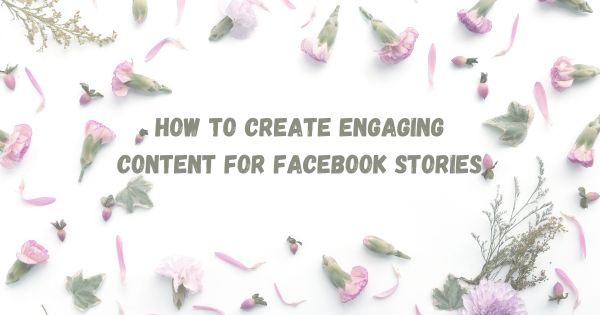Facebook Stories offer a powerful way to connect with your audience. With more than 500 million users engaging with Stories daily, it’s a space you can’t afford to ignore. Here’s how you can create content that captures attention and keeps viewers coming back for more.
1. Understand Your Audience
The first step in creating engaging content is understanding who you are talking to. Know your audience’s preferences, interests, and behaviors. This will guide you in creating content that resonates with them. For instance, if your audience is young and trendy, you might want to focus on vibrant visuals and upbeat music. If they are more business-oriented, you could share tips or quick updates related to your industry.
2. Keep It Short and Simple
Facebook Stories are only visible for 24 hours, and each story is only a few seconds long. This means you need to get your message across quickly. Focus on one clear message per story. Avoid clutter and keep your visuals clean and appealing. Short, snappy content is more likely to hold attention and be remembered.
3. Use Eye-Catching Visuals
Visuals are key in grabbing attention on Facebook Stories. Use high-quality images and videos that stand out. Bright colors, bold fonts, and dynamic movement can all make your stories more appealing. Tools like Canva or Adobe Spark can help you create professional-looking visuals, even if you’re not a designer.
4. Add Interactive Elements
Facebook Stories offer interactive features like polls, quizzes, and questions. These elements encourage your audience to engage directly with your content. For example, you can use a poll to get feedback on a new product idea or a question sticker to invite your audience to ask anything about your business. These interactions not only make your stories more engaging but also provide valuable insights into what your audience thinks.
5. Tell a Story
People love stories. Whether it’s behind-the-scenes content, a customer testimonial, or a day in the life at your company, storytelling can make your content more relatable and memorable. Use a series of stories to take your audience on a journey, rather than just posting disconnected updates.
6. Incorporate Text Wisely
While visuals are the main focus, text can be a great way to add context or emphasize a key message. Use short, impactful text overlays that are easy to read. Make sure the text contrasts well with the background to ensure readability.
7. Leverage Music and Sound
Music can significantly enhance the mood of your story. Facebook offers a library of licensed music you can use to set the tone. Whether you want something upbeat, calming, or dramatic, the right soundtrack can make your content more engaging.
8. Use Hashtags and Tags
Hashtags and tags help increase the visibility of your stories. Use relevant hashtags to reach a broader audience beyond your followers. Tagging people or brands can also increase engagement, as they may share your content with their own audience.
9. Analyze and Adjust
Finally, always review the performance of your Facebook Stories. Facebook Insights provides data on how many people viewed your stories, how many clicked through, and more. Use this information to understand what works and what doesn’t. Continuously refine your approach based on these insights to keep your content fresh and engaging.
Conclusion
Creating engaging content for Facebook Stories is about understanding your audience and delivering your message in a visually appealing, concise, and interactive way. With the right mix of visuals, storytelling, and engagement tools, you can make the most of this powerful platform to connect with your audience and achieve your goals. Start experimenting today, and see how your Facebook Stories can make a difference in your social media strategy.


